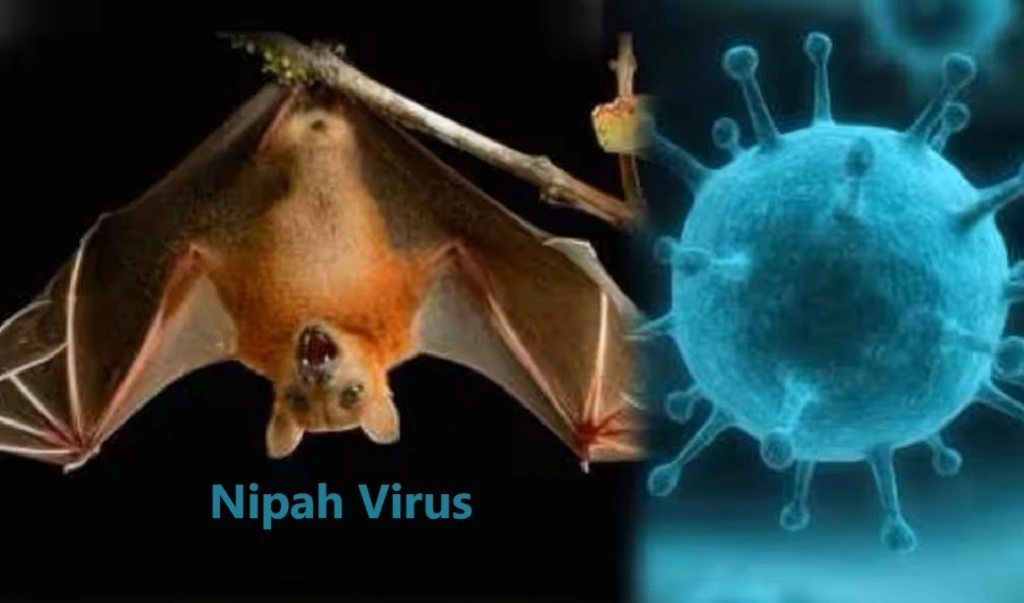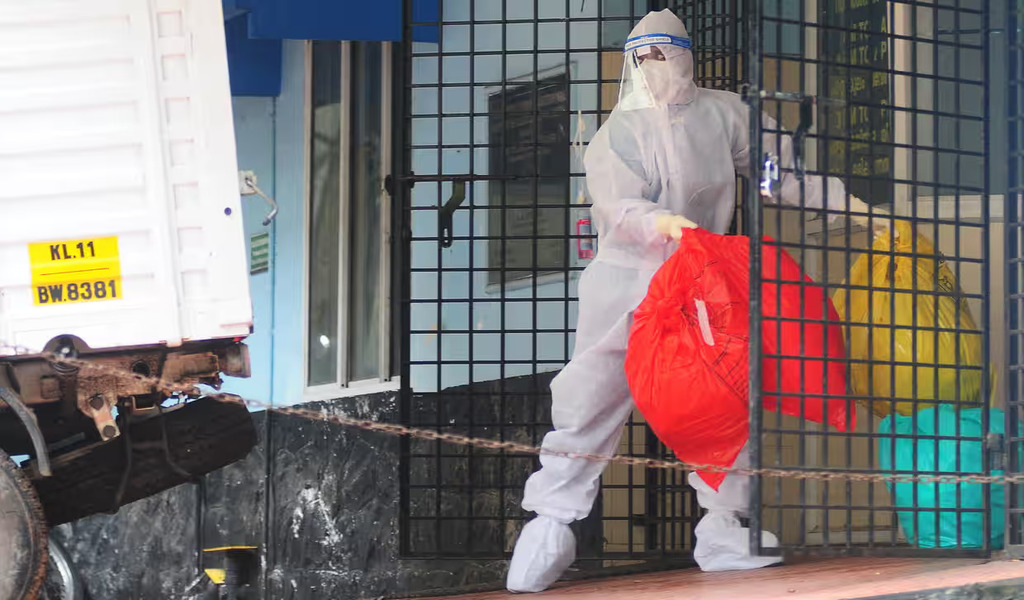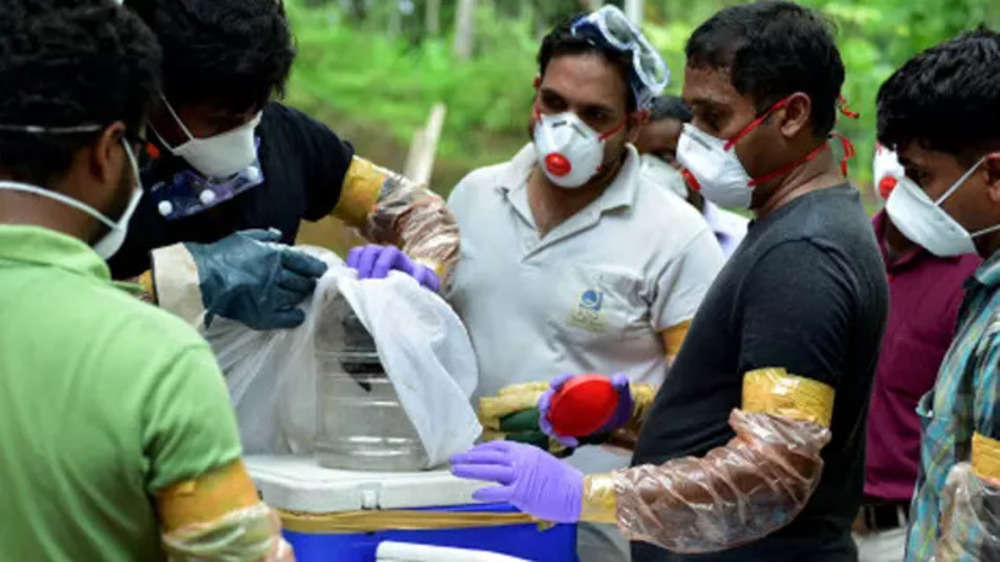News Asia
Nipah Virus: Kerala Implements Mass Testing After 4th Outbreak In India Since 2018

(CTN NEWS) – In a bid to contain the lethal Nipah virus, Indian authorities have implemented comprehensive mass testing measures after the virus claimed the lives of two individuals in the southern state of Kerala.
Officials reported that they have imposed restrictions on public gatherings and temporarily closed some schools in response to the situation, marking the fourth outbreak of Nipah in the region since 2018.
Nipah is a rare yet severe virus transmitted by bats, which can lead to symptoms such as fever, vomiting, and respiratory infections in humans. Severe cases may involve seizures, encephalitis (brain inflammation), and even result in a coma.
According to the World Health Organization (WHO), the virus carries a fatality rate ranging from 40% to 75%. Unfortunately, there is currently no known vaccine for Nipah, and the standard approach to treatment involves providing supportive care.
What is the Nipah virus?
The Nipah virus (NiV), as described by the Centers for Disease Control and Prevention (CDC), was initially identified in 1999 during an epidemic that affected both pigs and humans in Malaysia and Singapore.
This outbreak resulted in nearly 300 human cases and over 100 fatalities. The economic impact was substantial, with more than one million pigs being culled to control the disease’s spread.
In response to the latest outbreak of the virus, Health Minister Veena George has emphasized the importance of early contact tracing and the isolation of individuals displaying symptoms.
Stringent measures have been implemented, including restrictions on public movement in certain areas of the state to contain the medical crisis.
The state of Kerala has experienced its fourth outbreak of the virus since 2018, leading to the establishment of containment zones in at least seven villages within the Kozhikode district.
Medical personnel in direct contact with infected individuals are being quarantined to prevent further transmission.
The initial victim of this outbreak was a small landholder from the village of Marutonkara in the Kozhikode district.
The victim’s daughter and brother-in-law have also been infected and are currently in isolation, with additional family members and neighbors undergoing testing.
The second death in this outbreak was linked to contact within a hospital, but it is important to note that the two individuals were not related.
To further investigate this situation, three federal teams, including experts from the National Virology Institute, are scheduled to arrive for additional testing.
Nipah Virus: Origins, Transmission, and Impact
The Nipah virus, a deadly pathogen, was first discovered in 1999 during an outbreak among pig farmers and individuals closely associated with pigs in Malaysia and Singapore.
Although no further outbreaks of NiV have been reported in Malaysia and Singapore since 1999, cases have continued to emerge almost annually in various parts of Asia, primarily in Bangladesh and India.
NiV is classified as a zoonotic virus, indicating that it initially spreads between animals and humans. Fruit bats, also known as flying foxes and belonging to the genus Pteropus, serve as the primary animal host reservoir for NiV. T
he virus can be transmitted through contact with infected fruit bats, pigs, and even through human-to-human contact, such as via saliva or urine.
The initial transmission from an animal to a person is referred to as a spillover event, and once an individual is infected, NiV can spread from person to person.
Human infections can range from asymptomatic cases to acute respiratory infections, including both mild and severe cases, as well as encephalitis, which involves swelling of the brain and can lead to coma within 24-48 hours.
Encephalitis has a mortality rate ranging from 40 to 75 percent, according to data from the World Health Organization (WHO).
Survivors of acute encephalitis may fully recover, but some may experience long-term neurological conditions, such as seizure disorders and personality changes.
Additionally, a small percentage of survivors may experience relapses or develop delayed-onset encephalitis, as noted by the WHO.
Nipah Virus Outbreak in Kerala, India: Measures and Concerns
The Nipah virus outbreak in Kerala, India, is indeed a concerning situation. To contain the virus and protect public health, Indian authorities have taken several measures:
- Comprehensive Mass Testing: Indian authorities have implemented comprehensive mass testing measures to identify and isolate infected individuals promptly. Mass testing helps in early detection and containment of the virus’s spread.
- Restrictions on Public Gatherings: To prevent further transmission, officials have imposed restrictions on public gatherings. This is a common strategy to minimize close contact between individuals and reduce the risk of virus transmission.
- Temporary School Closures: Some schools have been temporarily closed in response to the situation. This step is taken to prevent the virus from spreading among students and staff.
- Previous Nipah Outbreaks: The recent outbreak marks the fourth occurrence of Nipah in the region since 2018. This suggests that the virus has been a recurring concern in the area, and authorities are working to prevent its resurgence.
- Nipah Virus Transmission: Nipah is a rare yet severe virus transmitted by bats. It can be transmitted to humans through direct contact with infected bats or consumption of contaminated fruits or sap from date palm trees that bats have contaminated.
- Symptoms: Nipah virus infection in humans can lead to symptoms such as fever, vomiting, and respiratory infections. Severe cases may involve seizures, encephalitis (brain inflammation), and even result in a coma.
- Fatality Rate: According to the World Health Organization (WHO), Nipah virus carries a fatality rate ranging from 40% to 75%. This makes it a highly dangerous virus with a significant mortality risk.
- No Known Vaccine: Unfortunately, there is currently no known vaccine for Nipah. The absence of a vaccine highlights the importance of preventive measures, early detection, and supportive care as the primary approach to managing cases.
It’s essential for the public to follow the guidelines and recommendations provided by health authorities to minimize the risk of Nipah virus transmission and stay safe during the outbreak.
Additionally, research and efforts to develop a vaccine or specific treatment for Nipah should continue to address this serious public health threat.
Preventing Nipah Virus Infection: Strategies and Recommendations
As of now, there are no available vaccines for the Nipah virus. Drawing from past outbreaks, maintaining stringent cleanliness and disinfection protocols on pig farms, employing suitable detergents, can be a valuable preventive measure.
In the event of suspected outbreaks among animals, immediate quarantine measures are crucial. The World Health Organization (WHO) has advised the potential necessity of “culling infected animals,” ensuring the careful handling and d
isposal of carcasses through either burial or incineration to mitigate the risk of transmission to humans.
Given the absence of specific Nipah virus vaccines, raising awareness about the associated risk factors and educating individuals about essential precautions remains the primary means of reducing or preventing human-to-human transmission.
Standard disease control practices should also be rigorously followed.
To mitigate the risk of international transmission through fruits or fruit products contaminated with fluids from infected fruit bats, it is advisable to thoroughly wash and peel produce before consumption.
Fruits displaying any signs of bat bites should be discarded as an additional precautionary step.
RELATED CTN NEWS:
Somalia Launches National ID System In Partnership With Nadra To Advance ‘ID4Africa’ Initiative
China Dispatches Record 103 Warplanes Toward Taiwan Amid Escalating Tensions
Mount Fuji’s Overtourism Crisis: Japan’s Highest Peak Struggles With Overcrowding






























